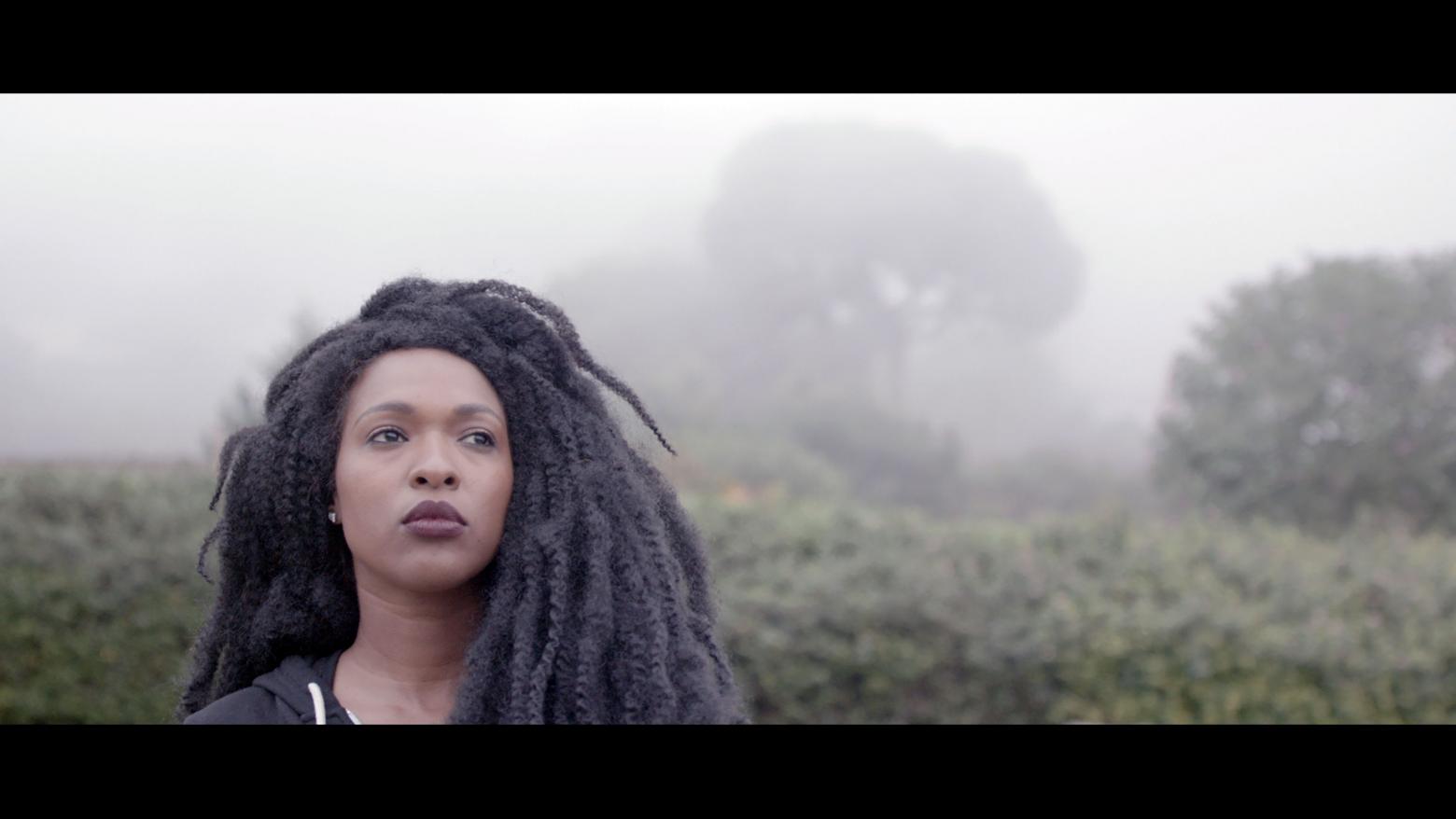When she learned about the thefts, O’Daniel, who is based in Los Angeles, understood the loss of their sound in the marching bands as akin to her own lived experiences as a person with binaural hearing loss and of having to fill in the gaps in conversations.
“My work internalizes and studies the details of what it means not to have total access to sound,” says O’Daniel. “I use that as a starting point to play with how representing aural experiences and sonic elements can be misleading and elusive in a hard-of-hearing or deaf person’s life.”
The installation will be complemented by online discussion featuring the artist on Wed., Oct. 21 (details below).
Scenes in the film highlight both the presence and absence of sound by sharing how marching band students resolved the missing sound of the tuba in their ensembles. O’Daniel weaves together the stories of the deaf drummer Nyke Prince for a near-mystical experience in the woods, the premiere of John Cage’s 1952 composition of 4’33”, and the last-ever punk show at San Francisco’s Deaf Club in 1979.
To create the script for The Tuba Thieves, O’Daniel inverted traditional screenwriting processes, commissioning musical compositions from hearing, hard-of-hearing, and deaf composers and writing scenes from those compositions. In this process, O’Daniel collaborated with deaf sound artist Christine Sun Kim, who produced the soundtrack for the film, hearing painter and musician Steve Roden, and the hearing composer Ethan Frederick Greene.
The installation may be seen continuously from the 1 Washington Place sidewalk beginning Monday mornings beginning at 8:30 a.m. through Friday evenings at 5 p.m., until Nov. 20. The exhibition may also be viewed on the gallery website at https://wp.nyu.edu/gallatingalleries/aod.
Images may be downloaded here (courtesy of Alison O’Daniel):
https://drive.google.com/file/d/12sPmU9NSJa9MgPy24YtWbJvnP5WG6sNy/view?usp=sharing
Nyke Prince, a Deaf drummer based in Los Angeles, experiences the silence of nature.
https://drive.google.com/file/d/13qjtaFUvwAPZAF2yOYDHjwPzk7ubbck4/view?usp=sharing
The audience at the premiere of John Cage’s 4’33”.
https://drive.google.com/file/d/1FdV_HB6IwxX7i3cEhRTZeX3shXpg6PQG/view?usp=sharing
The singer of the punk band at the 1979 final punk show at the Deaf Club in San Francisco.
Alison O’Daniel (b. 1979, Miami, FL) is a visual artist and filmmaker based in Los Angeles, CA. Her work spans narrative, sculpture, installation, and performance. She holds an MFA from UC Irvine, a BFA from the Cleveland Institute of Art, and a Postgraduate Diploma from Goldsmiths College at the University of London. O’Daniel’s work has been presented at Centre Pompidou, Art in General, Knockdown Center, The Nightingale (Chicago), MOCAD (Detroit), NYU, the Cleveland Museum of Art, the Museum of Jurassic Technology and other venues. She has received grants from the California Community Foundation, Franklin Furnace Fund, Center of Cultural Innovation, Rema Hort Mann Foundation, and The Art Matters Foundation and is the recipient of the 2019 Louis Comfort Tiffany and Creative Capital awards.
O’Daniel uses her own experiences with hearing loss as a productive narrative tool in expanding the definitions of audio, sound, and captioning. In her work, O’Daniel reckons with sound both conceptually and as a medium, studying audience reactions to sound or the absence of it. The artist collaborates with hearing, hard-of-hearing, and deaf composers, performers, athletes, and musicians in order to highlight the loss or re-creation of information as it passes through various channels. Through her work, O’Daniel attempts to reveal the often hidden politics inscribed within a culture that takes hearing for granted and elevates the visual over the aural. She looks at captions as a third narrative space next to sound and visuals and hopes that more filmmakers will utilize them.
Discussion of The Tuba Thieves
Wednesday, October 21, 2020 at 12:30 p.m.
With Alison O’Daniel, Mara Mills, and curator Keith Miller.
Mara Mills is associate professor in the Department of Media, Culture, and Communication at New York University, where she co-founded and co-directs the Center for Disability Studies. Her most recent publication is the edited volume Testing Hearing: The Making of Modern Aurality (Oxford University Press, fall 2020). For more information about her publications and other work, visit her website at maramills.org.
Keith Miller has been the curator of the Gallatin Galleries since it opened in 2008. Prior to that he was the founding curator of the SAC Gallery at Stony Brook University from 2001 to 2008 and has curated over 40 thematic gallery and museum exhibitions. His curatorial practice begins from the premise that the gallery is a site for engaged political conversation. He has been a part-time professor at the Gallatin School of Individualized Study at NYU since 2006 and was awarded the Gallatin School Award for Excellence in Teaching in 2014. He is a 2015 Guggenheim Fellow, a 2014 Jerome Fellow and works as a filmmaker, artist, and curator. His paintings and videos have been shown in various solo and group shows throughout the world.
The event is co-sponsored by the NYU Center for Disability Studies.
Contact:
Keith Miller, Curator
The Gallatin Galleries
212.998.7322
1 Washington Place
New York, NY 10003


